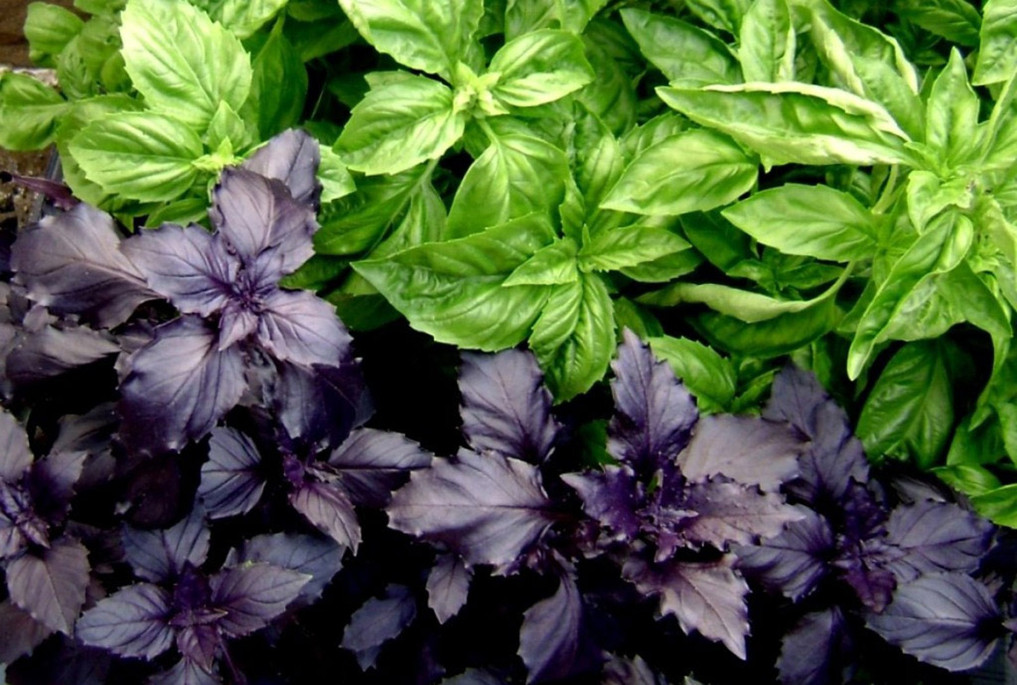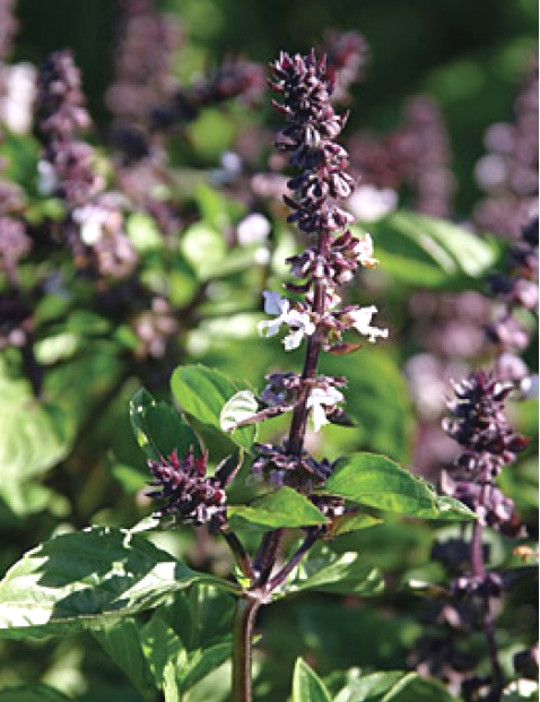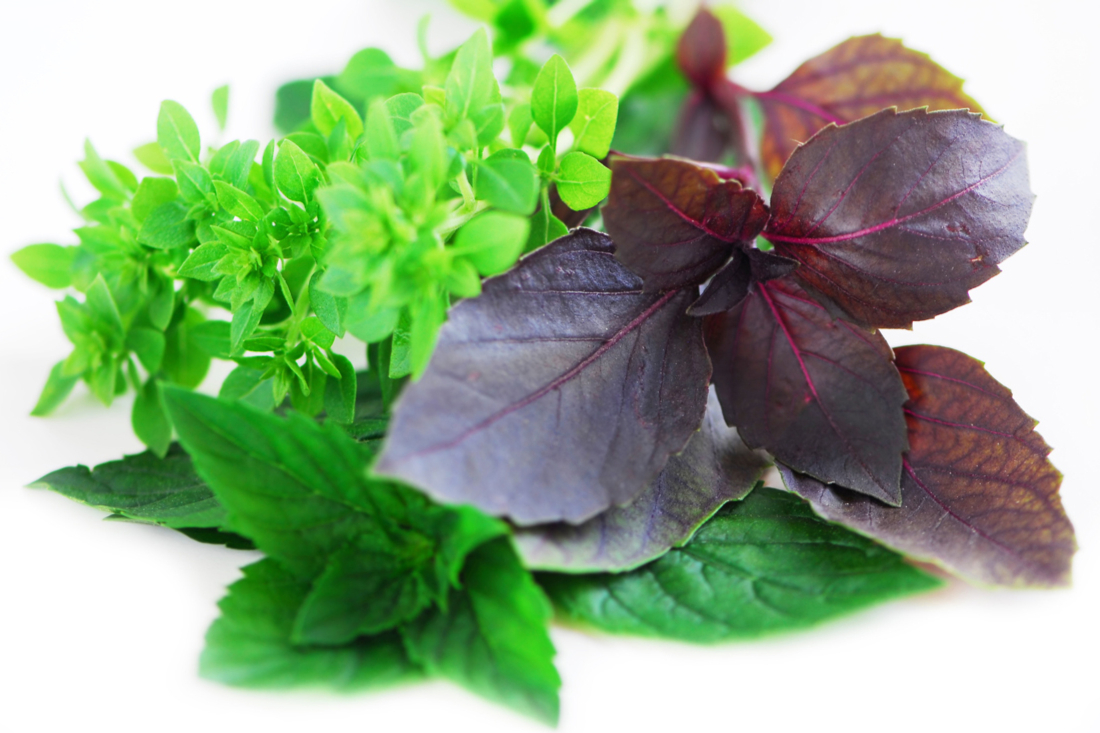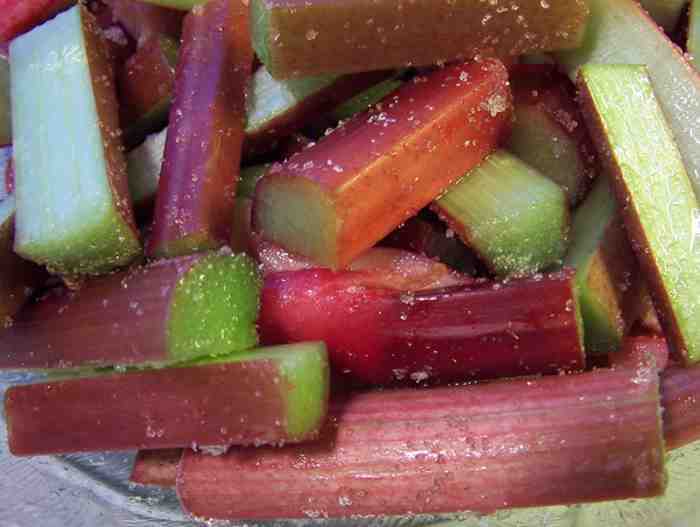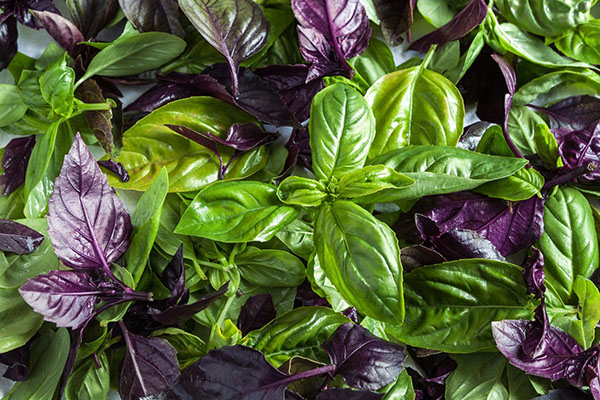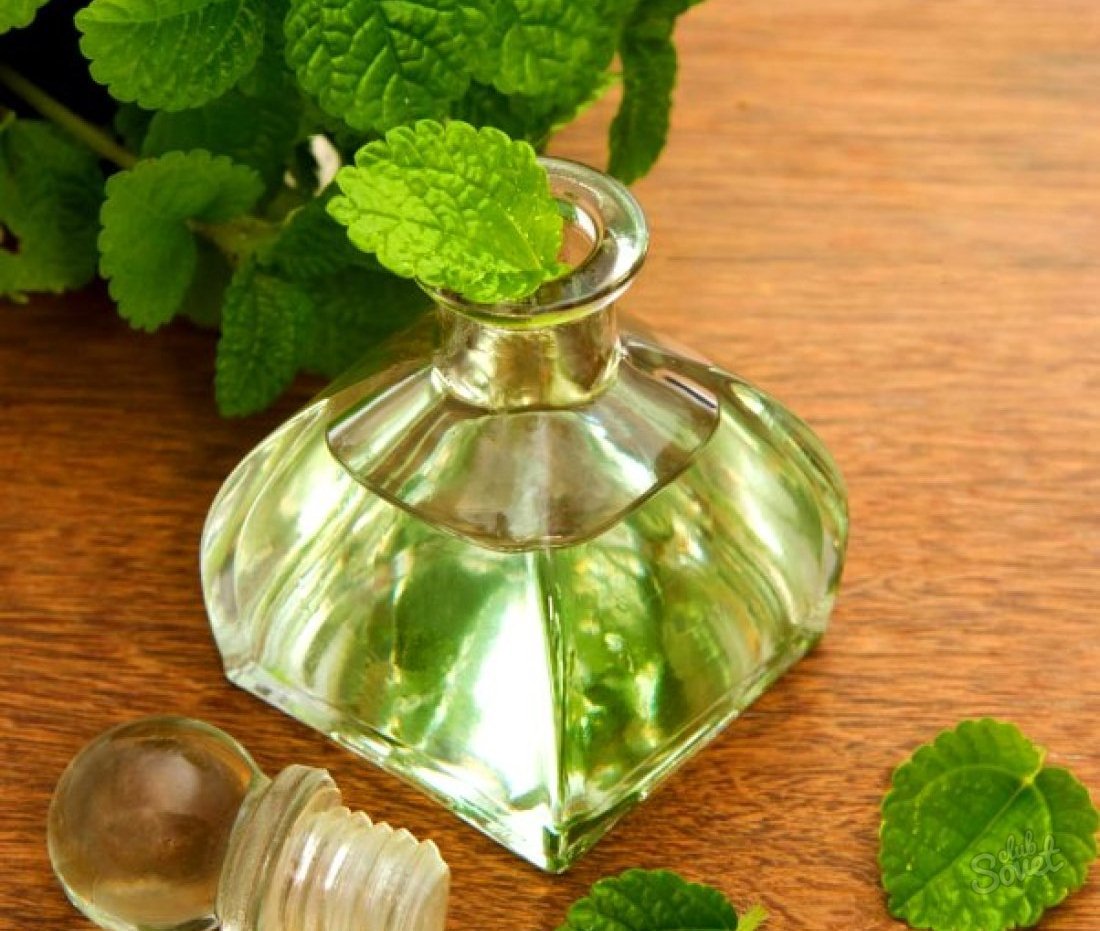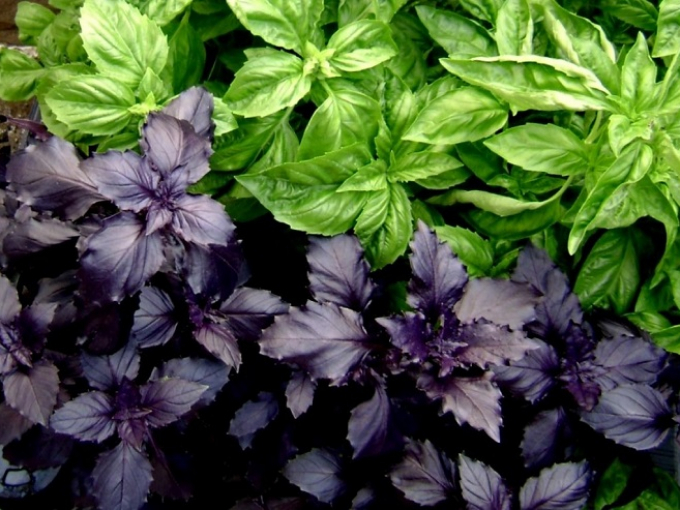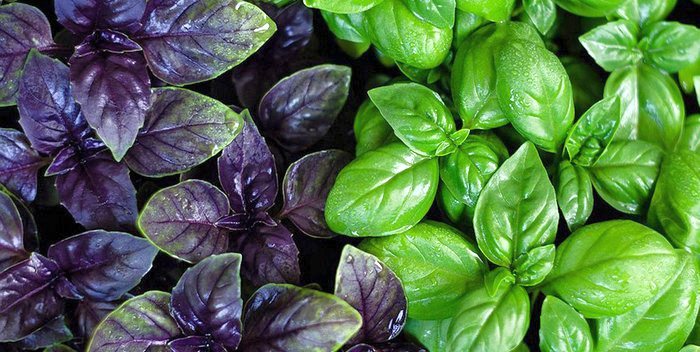Content:
Basil is a spicy aromatic annual plant known in Russia since the 18th century, and in the region of origin (Asia) - from the 12th century. Also typical for warm regions: Iran, India, Ceylon, Italy, Greece and the Caucasus, where it can grow wild. There are about 150 varieties of royal herb Basil, differing in the height of the bush, the shade of aroma and the two main colors of the leaves: green and purple.
Cooking makes extensive use of the aromatic properties of basil. Depending on the shade of taste, green and purple leaves in dried and fresh form are used to prepare second courses, desserts and sauces. Basil is used to flavor vinegars and oils, to make sausages and wine. Basil is not added only to mushroom dishes, these bright tastes contradict each other.
Popular varieties
Clove is a selection cultivated since 1996 and has a distinctive strong clove or clove-pepper aroma. Medium height, ideal for indoor growing in pots. Large green leaves are used for pickling and canning as a natural flavoring agent that can replace the common clove.
Purple - has a pungent odor than other species, due to the content of one and a half times more aromatic oils. One of the best varieties, Yerevan, is especially popular in Caucasian cuisine; it is used fresh to flavorfully cook meat and vegetables, thanks to the presence of a combination of the taste of fresh black tea and allspice. Also called basil blue, because of its bright color, it is often used for decorative purposes. The purple color of the leaves is of the Ararat variety. It works well with cheese salads and vegetable soups.
Fragrant - classic, garden, one of the most common types, has a tart camphor taste. Medium height, up to 50 cm. Leaves are green, basil flowers are white.
Italian - has a strong aniseed aroma, is used in Mediterranean cuisine, the recipe for the famous Pesto sauce cannot do without this spice, it also goes well with tomatoes. The most common in Italy is the Neapolitan basil, suitable for indoor growing.
Mexican - another name for Cinnamon basil, thanks to the substance cinnamate has a characteristic cinnamon flavor. Differs in a peculiarity of appearance - small green leaves on a purple stem. Due to its taste, it is suitable for preparing hot drinks and fruit dishes.
Features of agricultural technology
All varieties are thermophilic, therefore, at the beginning of the season, basil is planted only in greenhouses, and in open ground - with the final setting of positive temperatures in June. They do not tolerate a drop in temperatures, from this they can die within a few days. The basil branched bush loves open, sunny areas with fertile, loose soil. Poorly tolerates heavy, waterlogged soils. Cultivation is carried out by seedlings. For seed germination, a temperature of 25 ° C is required. Drying or waterlogging of the soil is not allowed.
For greater branching and foliation, remove the tops with flowers. Abandoned basil flowers attract bees well.
The plant contains the highest amount of essential oil during the budding period. During the season, you can sow the crop several times, and at home - all year round. For indoor potted cultivation, choose undersized or medium-sized varieties, from 15 to 50 cm.
Most vitamins and microelements are preserved during freezing, dried raw materials are stored in ceramic containers with the ability to tightly close the lid, when moisture gets in, it deteriorates. Cut or purchased basil is stored in the refrigerator in a glass of water for no more than a week.
Benefits of basil
The chemical composition of basil includes substances that have a beneficial effect on the body:
- essential oils;
- vitamins: A, B2, C, B5, B9, K, PP, choline;
- macronutrients: calcium, magnesium, sodium, potassium, phosphorus;
- trace elements: iron, zinc, copper, manganese, selenium;
- glycosides;
- saponins;
- tannins.
Food with the use of the oldest spice activates not only receptors, raising mood, but also supports the protective functions of the body.
Bazilik was originally used as a medicine. Before the invention of pharmaceuticals, medicine used infusions and decoctions from it to relieve inflammation and joint pain in rheumatism. What basil is useful for is helping to fight intestinal infections. Increases blood clotting. Bioflavonoids have anti-inflammatory activity in the fight against cancer. Has diuretic properties. Tea with plant leaves has a calming effect on the nervous system, reduces headaches, and normalizes sleep.
Basil application - to reduce sore throat, it is used as an infusion from dried raw materials, in which a pinch of the herb is brewed with boiling water and infused for several hours. This popular method can be used for gargling or ingestion, and can also lower the temperature.
What color of leaves to choose when growing a crop and the difference between them is not only a matter of taste, because natural anthocyanin glycosides in the composition of the spice provide a dark purple color, which have bactericidal properties that support immunity, they help to cope with infections. They have increased antioxidant properties, which is why the use of purple basil is useful.
Cosmetology uses the properties of basil to improve the condition of hair and skin. It is added to face masks and hair rinses. It is used as a phyto-lotion for skin prone to inflammation.
A man, using purple and green basil in his diet, increases the capabilities of his body, because the benefits of indigestible green fibers are very high.
Contraindications
The plant should not be used by people drinking blood thinners - the basil herb will interfere with their work, with the risk of blood clots.
Be wary of eating greens for people with high blood pressure, after suffering heart attacks and strokes.
A woman during pregnancy and lactation should not abuse this herb because of the tonic properties of basil.
Children under 7 years of age are a contraindication to the use of culture.
The plant is capable of accumulating mercury in small quantities, so each person should not excessively abuse the seasoning in his diet, but, using the medicinal method of application, take breaks between doses.
Cultural pests
Crop rotation is important for a crop - when growing in one place for several seasons in a row, it is susceptible to fusarium, a fungal disease characterized by the appearance of brown spots on the leaves of basil. It is most favorable to plant in the same place after 5 years.
Basically, the plant, due to the strong smell, is not damaged by insects, but under unfavorable conditions, at a young age, aphids or field bugs can harm it, as they grow, they usually disappear. In conditions of high humidity, the leaves can be eaten by snails, caterpillars, and in dry air - by tobacco thrips. Prevention of pest control and crop care consists in the general improvement of the site, the maximum destruction of weeds.
The royal seasoning, with simple agricultural technology, is able to diversify the food ration, thanks to its complex aroma and its shades. It is used in canning and various cuisines of the world. The decorativeness of the bushes increases the aesthetic appearance of the site or window sill at home.
